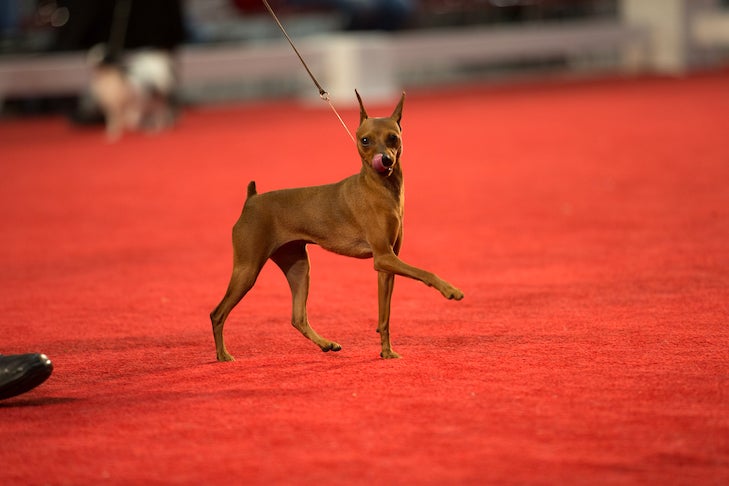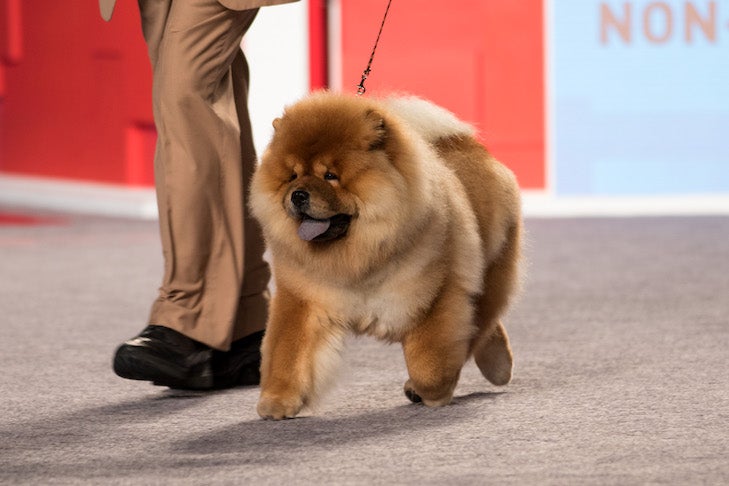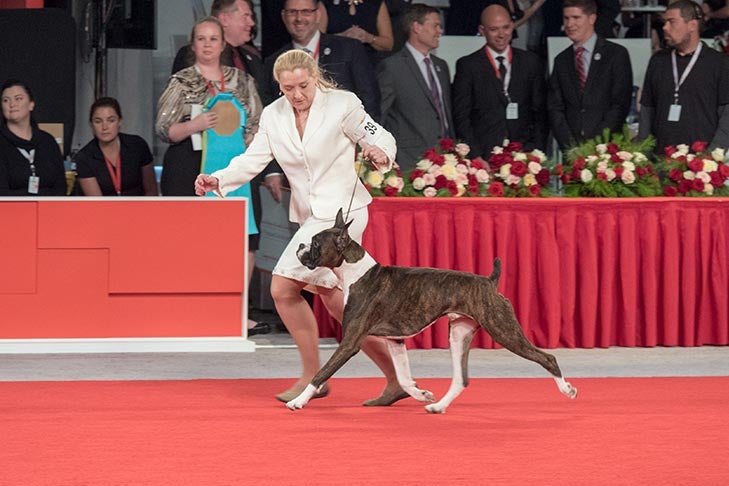
As you work up a sweat with your huge, loose-jointed Mastiff puppy, trying to hold up his mid-section while keeping all four of his feet pointed in the same direction, it’s not surprising you’ll watch the Doberman Pinscher handler with a touch of envy. The Dobe glides around the ring, head held high, then nails the free stack. “Our day will come,” you reassure yourself, as you walk back to your set up, take off your necktie and reach for a towel to wipe your dripping forehead.
Except your Mastiff will never fly around the ring with his head held high. Nor was he ever meant to show in such a flamboyant way. The Mastiff is the noble heavyweight of the dog world, conducting himself with dignity in and out of the ring. You don’t want him running at breakneck speed, looking foolish. It is simply not what the breed is all about.
Let’s Talk About Type
Take a look around the Working Group. Dobermans, Boxers and Great Danes, with their long, arched necks and elegant head carriage, don’t show like Mastiffs, Saint Bernards and Newfoundlands. Alaskan Malamutes, Siberian Huskies, and Samoyeds have their own special style of moving, too, in keeping with the jobs they historically performed.
Differences in breed presentation exist in all the Variety Groups. Greyhounds and Bloodhounds, moving with a lowered head, would never show in the manner of the Afghan Hound, with its proud head held high. In the Non-Sporting Group, you would instantly lose the characteristic roll of the Bulldog or the stilted movement of the Chow if you ran with either of those breeds. But a Poodle that wasn’t square and high stationed, and didn’t move with style at a quick pace, would be equally incorrect. In fact, “Poodley” is a recognized term in the dog show world, and any Poodle that lacks this essential ingredient is failing in breed type.

Breeders, judges, and exhibitors who really care about the sport passionately guard against the phenomenon known as the “generic show dog.” That term is used to describe a dog that is lacking in the essential qualities that make each breed unique; one that is usually taller than its breed standard specifies, hairier, and moved at a much faster speed than is correct for the breed. It may be an impressive show dog, trained to the nines, happy to free stack for hours, but it lacks the fundamentals of proper breed type.
Pace Yourself
As a new exhibitor, your education must include knowing your breed’s history, standard and proper temperament; how to present it correctly in the show ring and at what speed to move it. Nervous exhibitors tend to move their dogs either too slowly, letting them sniff the ground and dawdle, or too quickly, which gives the unfortunate impression that exhibitors want to bolt out of the ring and have the whole experience be over. Handling classes are the best place to practice hitting the right speed; there will be instructors and breeder-exhibitors to observe you and your dog gaiting together, and someone can even capture your performance on a smartphone, that you can study later.
Sometimes people buy a nice dog, then discover the fun of dog shows later. Uh, oh. It’s tricky to adjust your speed and your expectations to the needs of a different breed. Successful professional handlers have it down pat, after years of practice. If you own a Dachshund but you feel more comfortable jogging with your friend’s Rhodesian Ridgeback at handling class, you may want to consider a second dog of a breed that better suits your athleticism.

Even in the Toy breeds, you may have bought a reserved little Japanese Chin or Italian Greyhound, but at dog shows you’ve come to really enjoy the extroverted showmanship of the cheeky Affenpinschers and Brussels Griffons. If you love to show but it isn’t feasible to add another dog to your household, ask breeders about a co-ownership. Many would be happy to have their dogs shown by a talented and fit pinch-hitter, especially in breeds that require running.
Celebrate the unique qualities of your chosen breed and show it in the manner that history and tradition dictate. Clown or aristocrat, long-legged athlete or short-legged lap dog, they each play an integral part in our beloved sport.

